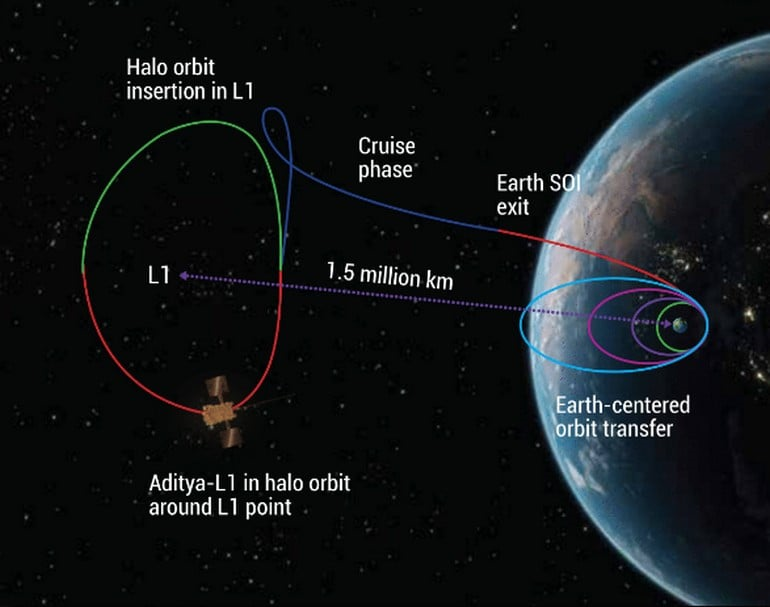After the Moon, India aims for the Sun: all about the Aditya-L1 mission

In a few days, India will launch a new space mission dubbed Aditya-L1. It is a probe full of scientific instruments that should improve our understanding of the Sun and its impact on space weather.
Hot on the heels of the resounding success of its Chandrayaaan-3 mission which landed a rover at the South Pole of the Moon just a few days ago, India is about to embark on a new space adventure by turning to the Sun. On September 2, Isro (the Indian space agency) will launch the Aditya-L1 mission.
This is a probe whose mission will be to study the Sun, more particularly its corona and the solar wind that emerges from it. Here's everything you need to know about the Aditya-L1 mission.
?What is the Aditya L-1 mission
The main objective of the Aditya L-1 mission is to study the dynamics of the outermost layers of the Sun, to identify the mechanisms that contribute to the creation of solar storms and to understand their impact on interplanetary space and the earth's climate.
The Indian space probe carries seven instruments that will be used to observe the photosphere, the chromosphere and the solar corona using electromagnetic detectors and detectors of particles and magnetic fields. Four instruments will focus on the solar atmosphere while the other three will observe the local environment at the Lagrange L1 point.

The Aditya L-1 space probe. ISRO
The data that Aditya L-1 will collect should help scientists better understand several key phenomena such as coronal mass ejections, solar flares, coronal loops and other phenomena, as well as their relationship to the geomagnetic storms that disrupt communications and power systems on Earth.
?What is the L1 Lagrange point chosen for the Aditya L-1 mission
Aditya L-1 will enter a stable orbit at the Lagrange L1 point, 1.5 million kilometers from Earth. In its press release, Isro explains that it chose this spatial position because it allows continuous observation of the Sun, without occultation or eclipse of the Earth or the Moon. “This will make it easier to observe solar activities and their effects on space weather in real time,” adds the Indian space agency.

The trajectory of the Aditya L-1 probe to reach the Lagrange point L1. ISRO
The SoHO (Solar and Heliospheric Observatory) and ACE (Advanced Composition Explorer) missions are placed at the Lagrange point L1 to study the Sun.
?When is the launch of the Aditya L-1 mission?
Takeoff of the Aditya L-1 mission is scheduled for Saturday, September 2 at 8:20 a.m. (Paris time). It will be launched by an ISRO PSLV XL rocket from the Satish-Dhawan Space Center located on the island of Sriharikota (80 km from Madras).

Initially, the space probe will be placed in a low Earth orbit which will be gradually made more elliptical before firing to fit into the Lagrange L1 orbit.
Source: ISRO

